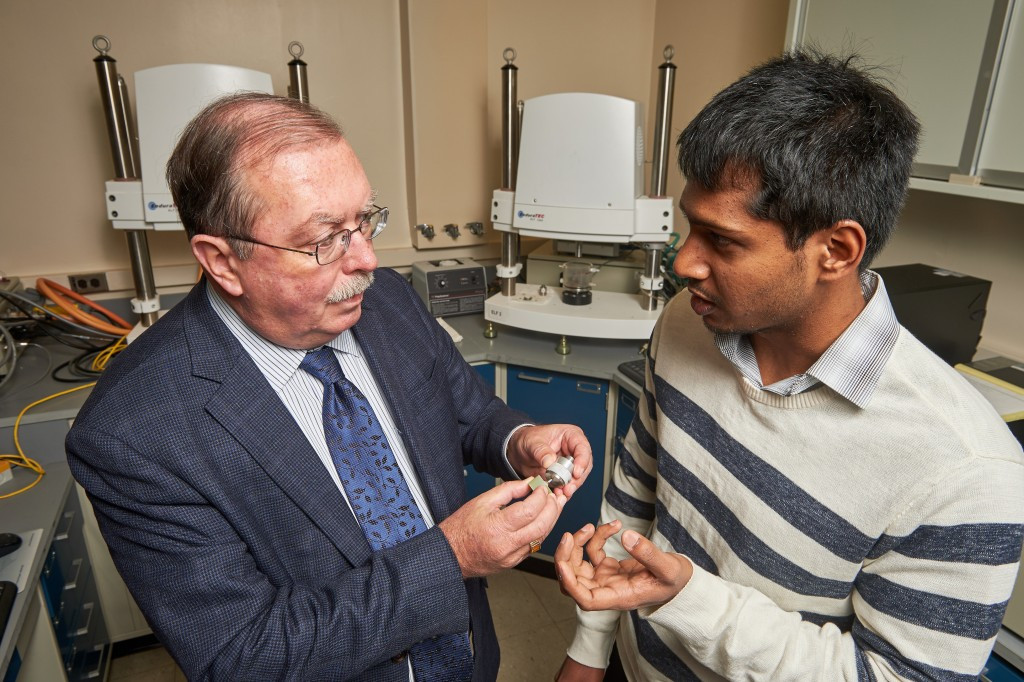Dr. J. Robert Kelly, a professor of reconstructive sciences at the UConn School of Dental Medicine has patented his artificial salivary gland design through his startup, Oral Fluid Dynamics, and the support of the University.
Xerostomia, or chronic dry mouth, affects upwards of 64 million Americans each year and is a side effect of many common prescription drugs and autoimmune diseases like Sjogren’s Syndrome.
Xerostomia is considered a medical problem which can cause oral discomfort and pain, difficulty chewing, swallowing and speaking as well as tooth decay. Other saliva substitutes and topical therapies, like toothpastes and mouth washes, currently on the market have not proved to be effective for providing relief to those who suffer from dry mouth.
In order to commercialize this discovery and advance it to market, Kelly and co-inventors Drs. Douglas Adams and Martin Freilich have formed a startup, Oral Fluid Dynamics. The company is currently located at UConn’s Technology Incubation Program at UConn Health in Farmington.
Once fully developed, Oral Fluid Dynamic’s technology will be implanted in the jaw to provide a consistent stream of saliva replacement fluid. The device is triggered through contact with the patients’ teeth and/or chewing motions. The artificial gland treats the fluid that surrounds cells and bone marrow fluid, pumping it into the mouth and serving as an effective means of remedying saliva deficiency. The device harvests these internal fluids and adjusts their chemical makeup so that they resemble naturally created saliva.
While this product will not be on the market until clinical trials are completed, Kelly and his partners are encouraged by the steady progress they have made, with support from several university-based, state and federally run programs, as well as interest from outside investors.
“This isn’t just a question of discomfort,” said Kelly in 2016, a seasoned inventor who holds eight patents and counting. “Along with symptoms like frequent thirst, bad breath, and sticky mouth, chronic xerostomia can also result in rapid tooth decay, fungal infections, and problems eating and speaking due to insufficient saliva production. We expect our product will drastically improve quality of life for patients suffering from this condition.”
Kelly’s efforts to commercialize the technology have been supported by several UConn programs and offices. Technology commercialization experts housed in the Office of the Vice President for Research have conducted market evaluations and supported patenting efforts. Kelly and the Oral FLuid Dynamics team have also taken advantage of several entrepreneurship programs and funding opportunities, including UConn’s SPARK Technology Commercialization Fund and the university’s National Science Foundation Site, Accelerate UConn. Both of these programs help researchers realize the commercial potential for their inventions through funding and/or educational programming.
Kelly has also secured follow-on funding through the CT BioScience Pipeline program and the Connecticut Bioscience Innovation Fund, which are both funded and managed by Connecticut Innovations.



